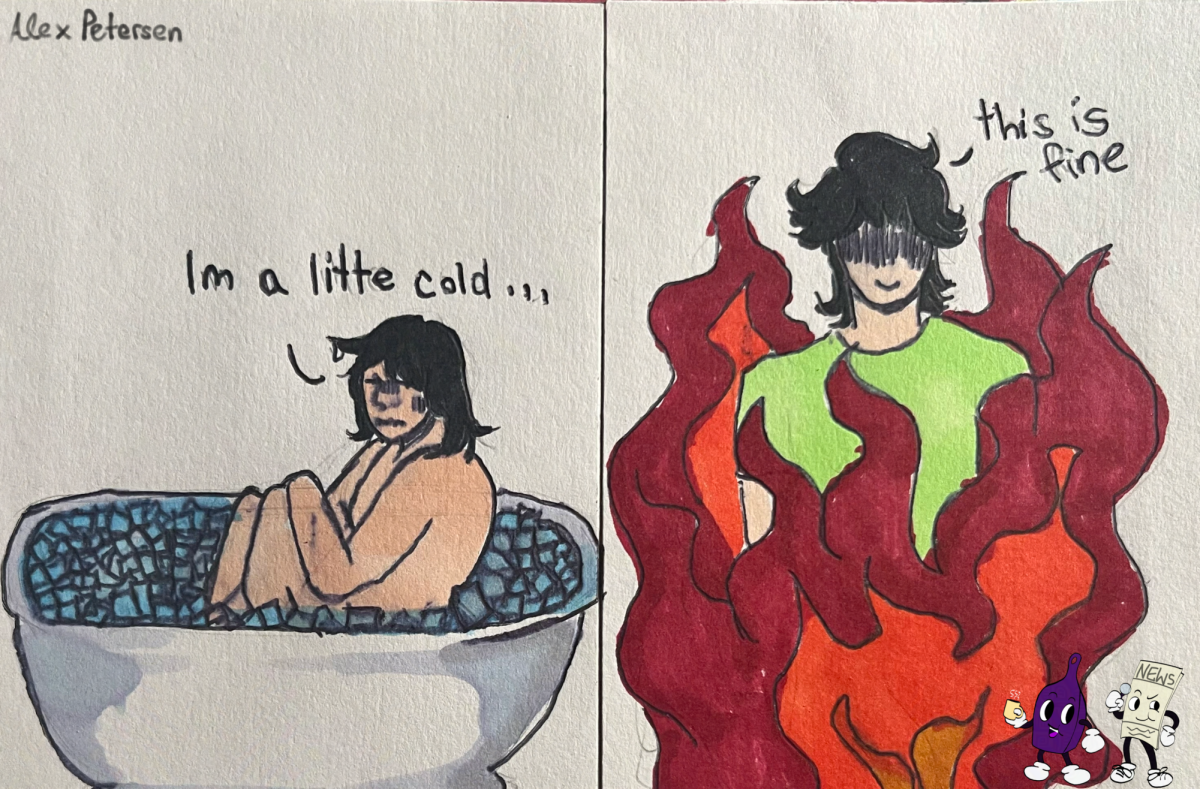Recovery is a key aspect of a workout routine, especially for athletes looking to complete at an elite level. Recovery can look different for everyone., Some do daily stretching, others take recovery supplements like protein shakes, but one of the most popular things to do is cold therapy.
Cold therapy is where someone fills a tub with ice cold water or dumps a bag of ice into the water. They then submerges their entire body in the water for 5-7 minutes. Cold therapy is normally advertised on social media by pro athletes or influencers.
Hot therapy is when someone goes into a sauna for a period of time or takes a warm bath after a workout.
Seen on Social Media
On the workout side of social media apps such as Instagram, one could find people dunking their whole body in a tub of ice water. The people filming these videos usually credit ice baths for giving them the “perfect body”. While ice baths can speed up metabolism which can make someone lose weight, it can also be problematic because losing weight too fast can lead to other health problems such as a weakened immune system.
Now people don’t just listen to anyone on the internet, but if the person on the screen has confidence and a large enough following, others could be more interested in what they have to say.
Social media also makes it look like many athletes do cold or heat therapy every day even if that isn’t true..
Someone could also come across a “coach” telling them that ice baths is the best way to recover after a workout and people are more likely to listen because it’s free advice and this person portrays themself as an “ expert” in this topic.
What Science Says
Even though cold therapy has been around since the 18th century, there has not been a lot of research on the long term benefits it has on the body. On the other side, hot therapy has been around since the 19th century and has been extensively studied and proven to be a better help for muscle soreness and joint pain.
Ice baths may feel great at the time, but depending on what it’s used for, it may not always give the desired effect. In a 2015 study, it was found that ice baths can reduce long-term muscle gains in mass and strength.
Ice baths also can’t be used right after a workout. It’s best to wait until 24 to 48 hours after a training session. This time frame could be problematic if someone is on a rigid training plan and only has one or two rest days a week.
Even though ice baths don’t have great long term benefits for your body, it can do a lot for your mind. There was a small study done by Bournemouth University on 33 adults who sat for five minutes in cold water. The subjects did a self report saying they were more active, alert, and felt less anxiety then they did before the bath. The brain scans of the subjects also showed a better emotional state after the bath.
It can also help people wake up and be more energized. A study was conducted on ten young adults who put their hand in cold water for five minutes. The results were that they felt less sleepy and more alert.
A benefit that heat therapy can have us that it can be used right after a workout. The only problem with saunas is that the person using them needs to be properly hydrated as after a workout, hydration levels drop, so depending on how hard the workout was, athletes might need to wait a few minutes before they get into the sauna.
Hot therapy can also be used more for chronic pain like joint stiffness or muscle spasms. In one survey, 67.8% of responders said that heat helped more to relieve their pain while 44.9% said that cold helped more.
Appropriate in moderation
Both therapies have their own distinct benefits for the body, but one can’t be overused more than the other.
Cold therapy should only be used on an off day or if a swelling injury is 72 hours fresh. It also should not be used for more than 15 minutes. Hot therapy should be used at night and a few hours after a workout. 20 minutes is the maximum time someone should take a warm bath or shower to avoid any burns.
Cold has benefits that help more on the mental side where hot has benefits the body. Both therapies should also not be used as a constant crutch for keeping any pains or injuries away like if swelling will not go down or if joints hurt for longer than a week. It’s also important to ask your doctor if you can use cold or heat therapy if you have any pre-existing health conditions.





